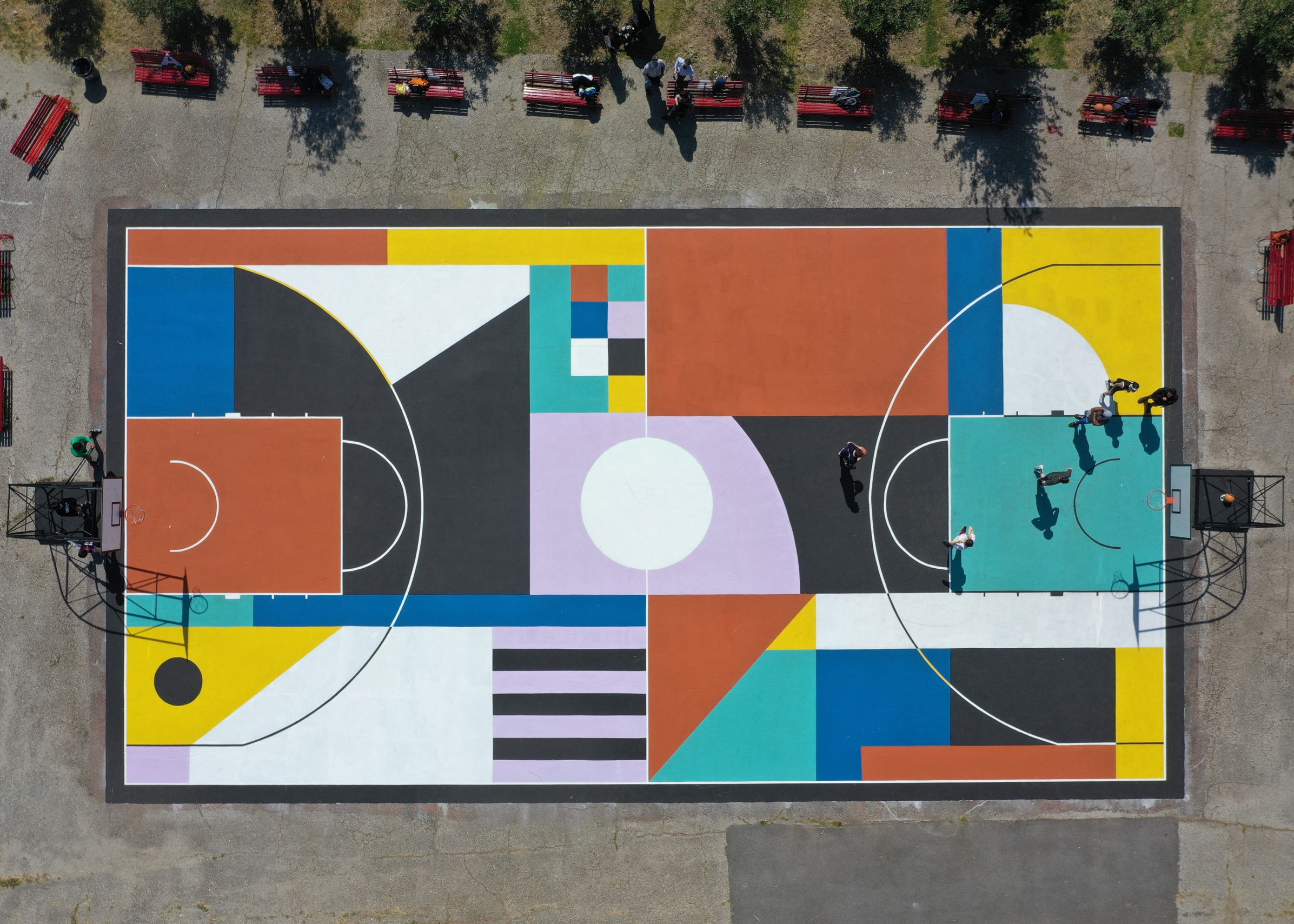
In recent years, street art is manifesting new and very interesting trends, going to marry with the sport. It is in fact increasingly common that sports fields such as basketball or futsal become the great canvases for works of street art that reshape and redevelop urban areas often degraded to places of no interest.
The fields are embellished with colors and shapes, maintaining the essential lines so as not to lose the function of an area dedicated to a specific sport, at the same time the chromatic wave that modifies the view, puts back into play vitality and beauty of the place that hosts it. Especially if you look at it from above.
Giulio Vesprini is one of the great authors of this renewal, which, however, is not limited to the modification of the perception of normally neutral places. With his work Vesprini triggers questions about the evolution of street art that from its origins has now taken on many declinations: "It makes sense if we use the word street art as a code to quickly understand a macro theme that contains a multitude of facets. Other than the code I don't think it has much meaning: it says everything and nothing. I remain of the idea that the most spontaneous part of this language can be called street art. Orders, festivals, funded projects take on a completely different connotation. In fact, we can talk about urban art, contemporary art, public art. It is difficult today to make these differences understood by a wide audience, by the masses who move from one fashion to another and who perceive certain activities as elitist. Interesting in my opinion is to 'use' these more pop terminologies to make people understand deeper messages. I am not against the expression street art, but against the way it is often used. I'm in favor of using it to open a discourse and explain other contents, a passe-partout, a sort of mind-map where we put street art in the center and all around the big atlas of contents and keywords".
We add to these reflections of the artist that a meeting point between two worlds such as sport and art also gives aspects still little studied, as a spontaneous musealization of areas that so do not lose their sense of existence without someone playing on them, but rather maintain a function of attraction h24.
Tellas, Alberonero, Skolp are other artists who have happily ventured with this version of urban art, always succeeding, giving an alternative scenario to the area, suggestions of themes that create links of meaning with the place and its history.
The suburbs in the first place see these inflorescences springing up on places of youthful activity, meeting points now marked by their own colorful and stimulating character.



